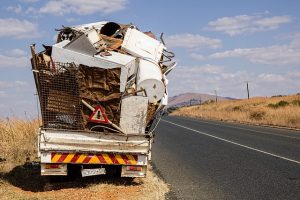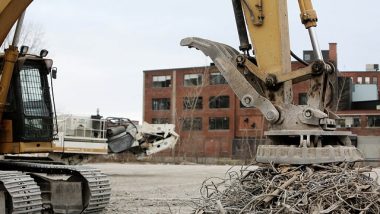Throughout the EU a waste to resources transition is underway. It's known as the “circular economy” and for it to be achieved at the rate intended by the EU, and the UK government, UK businesses need help. It is UK policy that waste will in future be largely eliminated by becoming a resource.

This resource is the outcome of re-using goods and materials, and recycling as much as possible. When waste re-use and recycling is not feasible, the next best is extracting energy from the waste by combustion such as by incineration combined with the use of the waste heat such as in CHP schemes.
The decision process as to whether to recycle or incinerate should always be guided by the so-called “waste hierarchy” discussed in other articles of this website.
This intention is also built into the Waste Strategy for the UK. This was published by the Defra in the Autumn of 2018. It now forms a part of Theresa May's government policy.
It means that the target is that 70% of all waste will be re-used or recycled into a resource within the next 10 years.
That's a lot of re-use and recycling!
Who will be doing a lot of this additional resource management, re-using or recycling?
You guessed it! – Businesses must do all the work!
It will need a small revolution in the way businesses work!
What's more, is that this change should have largely taken place already.
As long as 10 years ago, back in November 2009, under the Labour government of the day, there was an initiative by Defra and the EA. It was to help UK businesses turn waste into resources. It was to help with their waste to resources transition.
Right here in this blog, we reported on it in November 2009, as follows:
Previous Help for UK Businesses to Achieve the Waste to Resources Transition
In the article, we explained how the Environment Agency had unveiled a new strategy for tackling tomorrow's waste. The strategy will help businesses use resources more efficiently and divert more waste from landfill. These aims were lauded when they were unveiled as top targets for the Environment Agency over the five years 2010 to 2015.
The corporate strategy document of the time was titled; “Creating A Better Place 2010-2015. It also outlined the key waste-related challenges that are facing businesses and communities.
The announcement was made as follows. The main areas for attention were categorized under the headings of Hazardous Waste, Biodegradable Waste, and Waste crime, as follows:
Hazardous waste:
- Overview: There had been a step-change in the management of hazardous waste since the banning of co-disposal and mixing pits in the EU in the 1990s due to implementation of the Landfill Directives. The government had at that time (2009) also consulted on a proposed, “Strategy for Hazardous Waste Management in England” a move that led to improvements in hazardous waste treatment.
- What next? Hazardous waste poses particular risks to the environment and health. So, it is especially important that it is managed properly. Hazardous waste needs to be designed out at source, reduced and recycled wherever possible and residues managed safety.
Biodegradable waste:
- Overview: More than 100 million tonnes of bio-waste is produced in the UK every year. Much of this is recycled by spreading on to land.
- What next? Biowaste sent to landfill generates methane which is over 20 times more potent than CO2.
As well as needing to reduce biowaste production the government intended for more of this valuable resource to be turned into useful outputs. These can be energy and soil conditioners, for example through greater uptake of anaerobic digestion.
Waste Crime:
- Overview: Hefty fines and tough sentences have been handed out to waste criminals. There were 454 prosecutions over the past year (2008) as a result of the Environment Agency's crackdown on waste crime.
- What next? Waste crime is unacceptable. It puts our environment and our health at risk and undercuts legitimate businesses. We want to see businesses taking much more responsibility for the safe and lawful management of their waste. And, the courts still need to make sure crime does not pay.
UK companies could save in the region of £6.4 billion a year by using resources more efficiently
Head of Waste and Resources Liz Parkes said:
“Last year the total environmental costs of waste sent to landfill and incinerators in the UK rather than being recycled were £336 million.”
“But the latest estimates are that UK companies could save in the region of £6.4 billion a year by using resources more efficiently. Collaborative work by the Environment Agency and WRAP to set new quality standards for waste recovery could result in 17 million tonnes of waste being diverted. And, over 2 million tonnes of carbon and 14 million tonnes of raw materials being saved.”
“Good progress is being made towards municipal waste and packaging recovery targets. Regulated companies have also reduced the amount of waste they produce by 14% since 2005. But more can be done.”
“The bottom line is population growth and consumption patterns are placing an unsustainable burden on the planet's resources. Add climate change to the mix and we have no choice. Businesses must treat waste a valuable resource. In turn, we are working to make it easier for businesses to do the right thing and taking tough action against those who flout the law.”
The full article is available at The Environment Agency web site.
Looking back on this pledge now, it looks very short on real action. In fact, it looks like little more than what was known at the time as government “spin”.
Additionally, it's not at all clear what the section about waste crime could possibly have to do with helping UK businesses to achieve their waste to resources transition.
EA Help for Businesses with their Waste to Resources Transition 10 Years On
10 years on and the situation is the same. Waste crime has more than doubled in its financial cost, but real help for businesses which wish to be sustainable in their daily operation need to look elsewhere.
The vaunted new quality standards for waste recovery have still to be introduced which would make a real-difference have yet to materialize. What minimum standards that have been introduced into the UK for recycled material quality have been ineffective. In fact, so ineffective in producing recyclates of real value, that at the start of 2018 China banned imports of all but the highest quality clean recycled materials. China has even cracked down further since.
Waste Becomes a Product – But Only for Certain Materials/ Waste Treatment Processes
There has been some “help” for businesses in some limited areas to new quality standards for waste recovery to aid the push to make the waste to resources transition a reality. But, this has been in limited areas and exemplified by the few “end of waste” standards which have been agreed. The best known of these is PAS 100 which defines how to create a compost product.
Using PAS 100 businesses can sell the output as a product. The important point is that in this case unlike co many areas, the “end-of-waste” has been defined. In other words, the compost (originally a waste) becomes a product.
Site Waste Management Plans and the UK Construction Industry Lead the Way in the Waste to Resources Transition
It's not all doom and gloom though for the Waste to Resources Transition. Site Waste Management Plans (SWMPs) have been a great success. Once completing these became a legal requirement, the construction industry realized the advantages of efficient resource use. The law requiring SWMPs has now been found to be no longer needed. However, it took the government to regulate before the construction industry applied best practice, and in doing so appreciated the value to each business of proper waste management planning.
Segregation, re-use, and recycling pay dividends!
Here we refer to segregation and re-using as much construction waste as possible, crushing what remains in the way of stone and concrete and using it for the foundation works in the next generation of building.
Astonishingly, it shows how the construction industry has rapidly innovated to recycle in a way thought to be impossible before the government acted.
The result is that as from 2017-18 over 80% of construction site concrete is now recycled by crushing it and using. The resulting graded stone is a product (no longer a waste material – subject to the “Waste Regulations”) for a wide variety of uses in foundations and road surfaces.
Hazardous Waste

UK hazardous waste production reduced substantially when the implementation of the Landfill Directives took place. In many instances, hazardous waste needs to be designed out at the source. However, many would suspect that when the cost of disposing of hazardous waste in the UK rose, the manufacture of these goods simply moved to other countries.
Biodegradable waste
For biodegradable waste, there is a lot of research still going ahead in the use of materials which are more sustainable through their re-use. Anaerobic digestion was given as a way of using bio-waste and the industry grew in the UK. However, at present, the UK government has ceased supporting the fledgeling industry. The Feed-in-Tariff was withdrawn in March 2019, and the only remaining support provided through the RHI (renewable heat incentive) is due to cease in 2022.
Looking for Solutions for the Circular Economy and the Waste to Resources Transition
The most forward-thinking companies appreciate that they can achieve increased market share when they achieve the approbation of their customers.
They do this by introducing their own voluntary “Waste to Resources Transition”. And, it's funded from the savings achieved by using their resources more wisely and saving costs that way.
Unless and until the UK government starts to help UK businesses to achieve the Waste to Resources Transition, there is only one hope. The only hope is that businesses will follow the leaders en-mass take a DIY approach. Unless businesses find ways to invest and achieve truly positive economic and business benefits, the government's own stated policy targets will never succeed.
For a more sustainable economy with its great benefits in ameliorating climate change, it seems as if the only hope will be that business owners go it alone. They need to be encouraged by public opinion to find their own ways to do this. Right now there seems to be precious little help other than business survival for businesses to achieve their Waste to Resources Transition.
If you have an idea or a technology to help businesses in converting their wastes to resources, we would like to know about it. Please add a comment and we will be happy to publish your thoughts!







Hi
Please check out this technology, it’s new to the U.K. market but machines have been in operation in Europe for 20 years
It’s called The Converter by OMPECO
Check it out!
Danny
Danny – Your link did not work. I had to delete it. Please send the correct link.